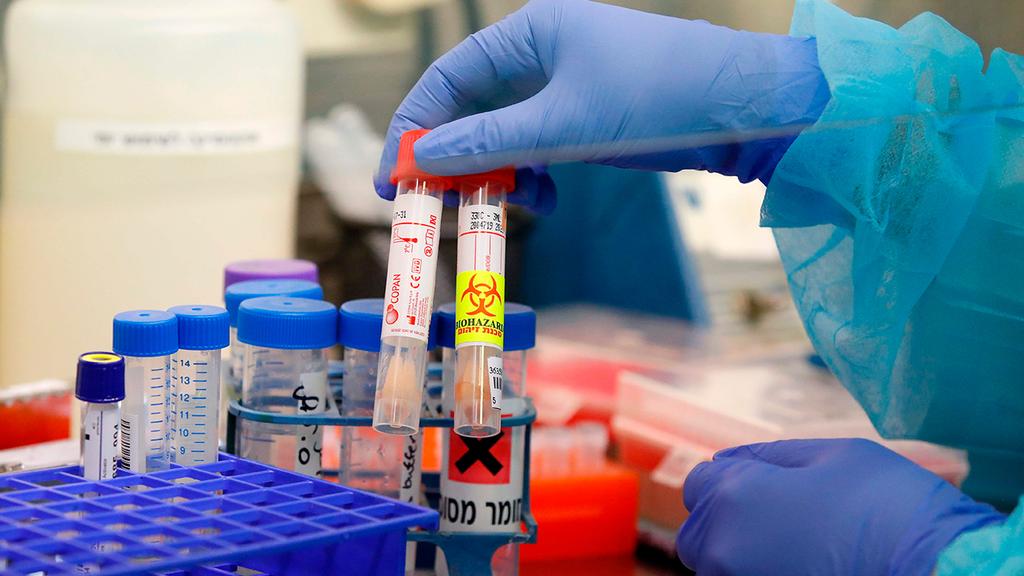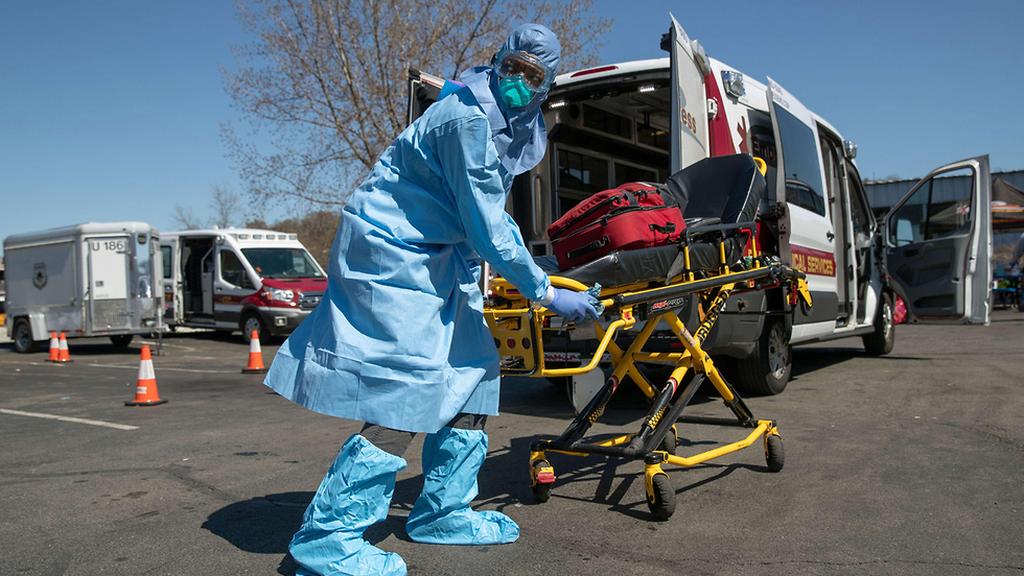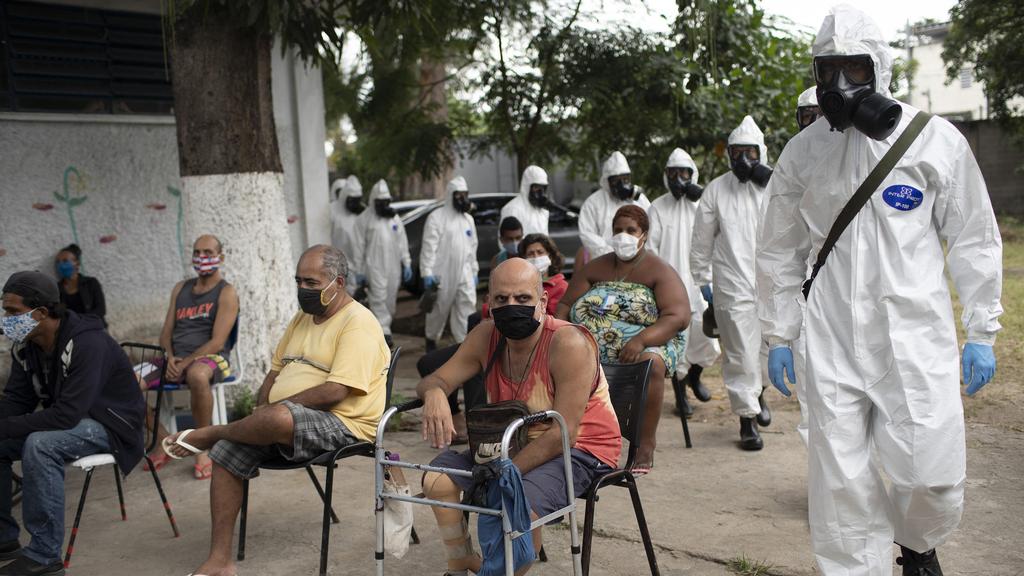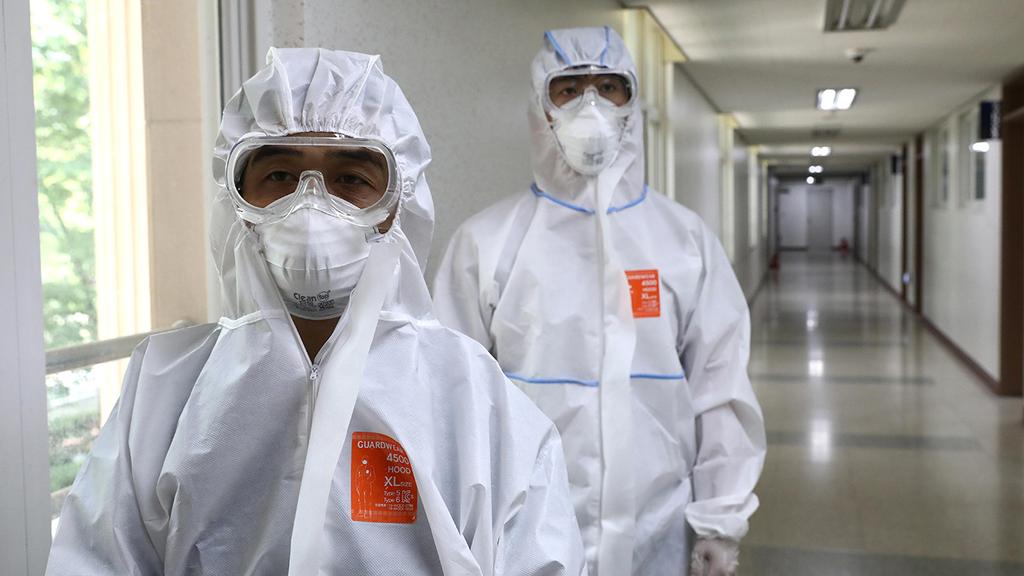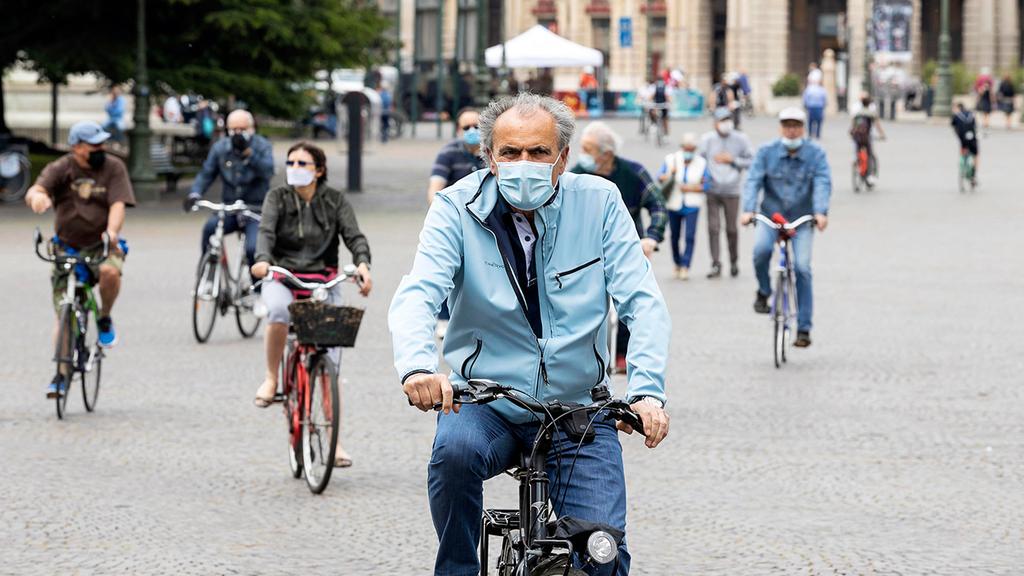Epidemiology is a precise science, just like mathematics and physics, it has rules, equations, and graphs.
It is interesting to note that the equations describing the spread of a disease are the same as those describing the progress of a chemical reaction.
11 View gallery


L-R: PM Benjamin Netanyhau, Health Ministry DG Moshe Bar-Siman-Tov and Health Minister Yaakov Lizman address the public during the coronavirus crisis
(Photo: Shalev Shalom)
So, it is not surprising that during the coronavirus crisis we were seeing chemists, physicists and mathematicians advising doctors and politicians on how best to deal with the virus’ spread.
And yet, it is disappointing to see that amid the equations and isolation measures, a severe disconnect existed between the exact science and the decision-makers because of distortions in description and analysis of the facts.
Let's begin with the term "exponential growth": This is a situation in which for example one patient infects another patient per day (a daily increase of 100%). If this infection rate remains unchanged, on the tenth day we would have 1,024 patients, and by the 20th day, about one million patients. This would be a doomsday scenario.
In Israel, we were told that this terrible fate was avoided because of the isolation measures imposed by the Ministry of Health. Well, that is imprecise to say the least.
Analysis of coronavirus growth data identifies a common trend throughout all countries infected by the virus, representing a wide range of population size and social distancing measures.
In Turkey, the virus’ daily growth was 87% initially and dropped to 2% after 44 days.
Israel dropped from 30% daily growth to 1% in 40 days; Sweden dropped from 40% to 3% in 54 days; Belarus dropped from 25% to 4% in 43 days. The last two notoriously took very minimal steps of social distancing and isolation.
The central model of epidemiology, known as SIR, predicted this outcome: You start with a 100% growth on day one, by day 15 the growth rate drops to 25%, and by day 20 the growth rate stands at 1%.
Meaning that if the virus would have retained its viral nature, we would have had a million times more patients by day 20. But due to the virus’s natural internal dynamic, by day 20 we had 1,000 times the number of patients we had on day one and not a million.
This is simply the epidemic’s dynamic, and the dwindling number of sick people has nothing to do with isolation measures taken by the state, which, at best, added to the virus’ natural decline.
Investigation of factual data from around the world along with the mathematical projections of the SIR model presents the government assertion that Israel's successful isolation measures have saved it from a terrible plague is nothing more than an illusion, while real data was never presented to the public.
Furthermore, with formulas and comparisons to countries where the epidemic broke out earlier, the final number of patients in Israel could have been predicted a month ago, or maybe even sooner.
Some say that mathematicians should stay out of crisis management, and there are those who claim that mathematical models of epidemiology should not be believed.
Opposition to the use of these models is, unfortunately, also the recurring theme in the report published by the National Security Advisory Committee, with the baseless excuse that "theoretical models should not be relied on as there are no valid models at the required level of confidence".
Another part of the intimidation campaign is the description of an "outbreak" in some countries, this is not fake news, merely an interpretation error of live data.
For example, an AP report published on May 2 claimed that, "In Russia, the number of new patients soared. A record of 9,633 patients, a 20% increase over the number registered the day before.”
One important thing escaped from the eyes of the writers. Of all 124,000 patients in Russia that day - 9,633 new patients, was nothing more than a slight increase, from 8% to 10% to be precise.
In the global media, every tiny change produces a scary headline compounded by a misunderstanding of the numbers and immediately repeated here by health officials. There is also an element of fear attached to a large number of people in a huge country such as Russia, where every percentage point represents over a thousand patients.
We must not allow this to blind us to the positive trend of a steady decline in all countries.
11 View gallery


A poster of Queen Elizabeth with a rallying message overlooks a deserted central London street during the coronavirus outbreak
(Photo: AFP)
The threat of a second wave should be analyzed in the same critical way; infectious diseases such as influenza generate recurring annual waves due to the emergence of a new strain of the virus, in which case infection can indeed start again and be worse than before.
This phenomenon must be distinguished from another wave of the same virus, which is in a state of steady decline. So far, no second wave of the virus has been observed in any country, including in countries such as China and South Korea, where the epidemic ended a few weeks ago.
This is with the exception of a recent temporary change that was reported in Singapore, as the result of contagion by foreign workers from Malaysia, and which does not constitute a real second wave.
In China, by mid-March, the number of new patients had already reached the low value of 44 per day, and by mid-April a rise of 350 was reported.
The press around the world cited this as a second wave in ominous articles cited by our own Ministry of Health. But when we look at the data, this addition to the 83,000 patients in China, constitutes a very small increase in infection rates, from 0.04% to 0.43% to be precise, confirming the premise that the possibility of a second wave of contagion is unlikely.
It is concerning that according to the criteria presented a few days ago by officials, that an inconsequential change (such as over 100 new cases a day) may be hailed as a second wave, resulting in mitigation efforts that would impede the reopening of the economy.
Of particular interest is the fact that consultants and the media ignore the fact that in all countries, without exception, an epidemic reaches its final stages when the percentage of people infected from the general population does not exceed half a percentage point.
Out of the entire population in Israel, 0.18% were diagnosed with the coronavirus, in Sweden 0.22%, and in Spain 0.47%. Nobody asks how is it that 99.5% of the world's population was not infected.
All over the world, including in Israel, there are indications that the number of virus carriers without symptoms is at least 10 times greater than the number of reported patients.
These carriers, who most likely make up 1%-5% of the population, are likely to be immune to the virus in some way and are in no danger of getting sick.
In addition, the SIR model shows that at the end of the epidemic (dependent on parameters) 10-30% of the population that is in danger of being infected, is not tested. This is the herd immunity we've heard about, which is created by the dilution of potential infectors.
But that leaves the question as to why other people, those who could potentially catch the disease, fail to get infected.
It is hard to ignore the possibility that these people were exposed to the virus in advance, or perhaps had previous exposure to a similar strain of the virus, as suggested by Prof. Ehud Kimron and his partners at Tel Aviv University.
It would have been essential for those who advise the government to examine this question and its possible answers, as these are critical in determining the exit strategies and future plans.
Finally, there is the issue of death that plays a major role, as officials ask, "can we allow thousands of deaths as seen in other countries?"
It must be understood that the number of dead per million residents consists of multiplying two different numbers: The number of patients per million residents on the one hand, and the percentage of dead derived from all patients on the other.
An insight that almost everyone ignores is that the first number is related to the infection rate and therefore may relate to the magnitude of the government's restrictions. The second number does not depend on these restrictions whatsoever.
When a person is already infected, their chances of dying are not dependent on social distancing but on the quality of the health system and the determination of medical staff to do everything possible to save a patient’s life.
On May 4, in his victory speech over the coronavirus, Prime Minister Benjamin Netanyahu claimed Israel is in excellent condition in regards to the mortality rate from the virus, while pointing out that in some European countries, the number of dead was up to 30 times greater than in our own country.
Without a factual basis, Netanyahu argued that this achievement was derived from the government's excellent isolation and emergency policies.
While Israel’s death rate puts us indeed in an excellent place when it comes to the number of infected per person, which depends on social isolation. Israel is close to the bottom of the list (64 out of 79) and almost as bad as Sweden and Belarus, which have taken almost no measures during the pandemic.
The analysis also shows that in the five countries with the highest mortality rate (Belgium, Spain, Italy, the United Kingdom and France), the death rate is on average 20 times greater than in Israel, but the predominant reason for that is the quality of medical care.
The prize then must go to Israel’s medical teams and a consolation prize to the Ministry of Health. Proper counseling would have saved this distortion of reality from the prime minister and public.
When analyzing the state of the coronavirus in Israel, and comparing it to other countries, it is evident that the government has failed miserably.
The public was never adequately informed of conventional epidemiological models to try to predict developments and to wisely regulate emergency measures in order to minimize the damages to the economy.
The information provided to the public throughout was lacking proper analytical foundation, involved self-congratulations, and unfounded warnings.
It is not too late to make the change that will ease Israel's path to an open economy as soon as possible.
Doron Lancet is the Professor of Human Genomics and head of the Crown Human Genome Center at the Weizmann Institute of Science.


